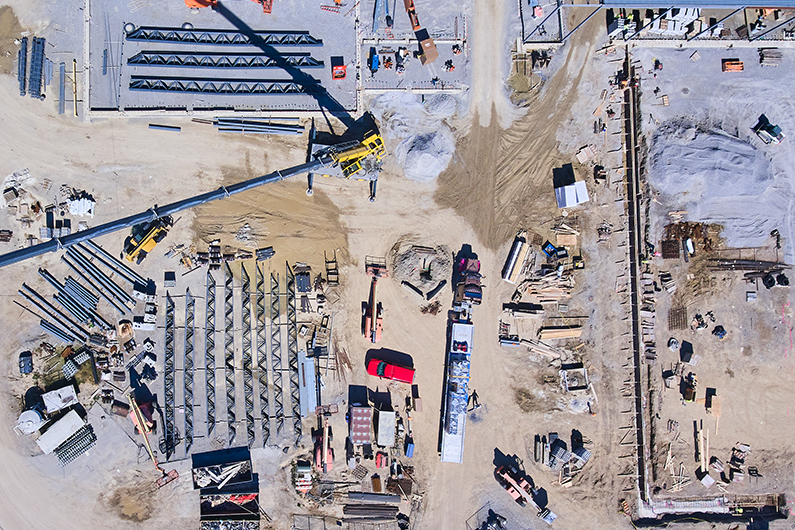Understanding Feasibility Studies in Commercial Real Estate: The Role of Tax Increment Financing (TIF)
Feasibility studies are an essential component of the commercial real estate development process. These studies systematically evaluate a project’s potential for success, considering various factors such as market conditions, financial viability, site selection, and infrastructure requirements. One financial tool that often plays a significant role in this analysis is Tax Increment Financing (TIF). Understanding the […]

Feasibility studies are an essential component of the commercial real estate development process. These studies systematically evaluate a project’s potential for success, considering various factors such as market conditions, financial viability, site selection, and infrastructure requirements. One financial tool that often plays a significant role in this analysis is Tax Increment Financing (TIF). Understanding the relationship between feasibility studies and TIF can provide valuable insights for developers, investors, and local governments.
What is a Feasibility Study?
A feasibility study is a comprehensive assessment that helps stakeholders determine the practicality and potential success of a proposed real estate project. The study typically addresses several critical questions, including:
- Market Analysis: Is there adequate demand for the proposed development? Analyzing market trends, target demographics, and competition is crucial in assessing this aspect.
- Financial Analysis: Will the projected revenues cover the initial investment, operational costs, and financing expenses? This evaluation often involves creating financial models that project cash flow and return on investment.
- Site Evaluation: Is the selected location appropriate for the type of development planned? Factors such as accessibility, visibility, and zoning regulations are analyzed to assess the site’s suitability.
- Infrastructure Requirements: What infrastructure improvements are necessary to support the project? This includes evaluating existing utilities, transportation networks, and public amenities.
The insights gained from a feasibility study assist stakeholders in making informed decisions regarding project development.
The Role of Tax Increment Financing (TIF)
Tax Increment Financing is a funding mechanism designed to encourage economic development in designated areas. TIF allows local governments to capture future tax revenues generated from increased property values resulting from new developments. This captured revenue is then allocated to finance essential infrastructure improvements needed to support the project.
Exploring TIF’s Relevance
Through the Lens of a Developer
- Infrastructure Funding: A significant component of feasibility studies is evaluating the infrastructure requirements for the proposed project. TIF can provide a means to fund these improvements, such as roads, utilities, and public spaces. Understanding these needs helps determine if TIF is a suitable financing option.
- “But For” Test: A key requirement for establishing a TIF district is demonstrating that the proposed development would not occur without the TIF financing. This “but for” test is an essential consideration in feasibility studies, as it assesses the likelihood of the project proceeding without TIF support. If a project can be justified as needing TIF funding to move forward, it strengthens the case for utilizing this financial tool.
- Market Dynamics: Feasibility studies analyze market conditions and demand for the proposed type of development. TIF’s effectiveness in enhancing property values and attracting investment relies on these market dynamics. Conducting a thorough market analysis within the feasibility study helps gauge whether the TIF district can effectively stimulate growth and support the development.
Through the Lens of a Municipality
- Cost-Benefit Analysis: Both TIF assessments and feasibility studies typically include a cost-benefit analysis. This analysis evaluates the projected economic benefits—such as increased tax revenues and enhanced property values—against the costs associated with financing infrastructure and potential risks. This comparative evaluation assists stakeholders in understanding the financial implications of using TIF and its impact on overall project feasibility.
- Long-Term Considerations: Feasibility studies often take into account the long-term effects of TIF. Once the TIF bonds are repaid, the incremental property value is released for general taxation, potentially increasing revenues for local governments. This aspect is vital for assessing the overall fiscal impact of the project on the community and for determining whether the TIF mechanism aligns with long-term economic goals.
As the commercial real estate landscape continues to evolve, understanding the interplay between feasibility studies and financing mechanisms like TIF will remain important for developers, investors, and local governments. By carefully considering the implications of TIF in their feasibility studies and potentially partnering with Hageman Capital, stakeholders can make informed decisions that contribute to sustainable development and economic vitality within their communities.
The integration of TIF in feasibility studies not only enhances the analytical framework but also aligns financial resources with community development objectives, fostering a more comprehensive understanding of the potential impacts of proposed projects. Contact us today to learn more about our services and how we can support your real estate projects.